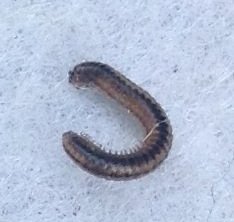The silkworm is one of the most amazing creatures on planet earth. What other type of creature can spin a single thread that is considered one of the most durable pieces of “fabric” in the world? No only this, but silkworms can produce more silk than you can imagine in the form of one single, seemingly endless, thread.
Silkworms wrap themselves in a cocoon made of raw silk after they have molted at least four times. This silk cocoon is made of one single thread of raw silk that ranges from 1,000 to more than 3,000 feet in length. The silk is produced in the salivary glands of the silkworm and it is used for protection during the silkworm’s pupal stage.
Because silk is considered one of the world’s most beautiful fabrics, it is estimated that approximately 75 million pounds of raw silk are produced each year. It takes more than 3,000 cocoons to make one pound of silk and more than 10 billion pounds of mulberry leaves to feed the silkworms that produce the silk. Commercial silk is produced by boiling the cocoons. This means that many of the silkworms are killed in their cocoons before they can become moths. Some of the moths are allowed to emerge so that these chosen few can continue the population of silkworms.
The good news is, you can help stop the unnecessary killing of silkworms by “cruelty-free silk.” It’s called “peace silk.” Peace silk, also referred to as “vegetarian silk,” uses the process of degumming and spinning the raw silk to produce a soft, fluffy fabric that is excellent for warmth and therapy. This degumming and spinning process allows the moth to safely emerge from the cocoon and live out the remainder of its life cycle — in peace.
About Silkworms
Silkworms are significant to humans because they produce one of the world’s most precious commodities—silk. Because the silkworm is so precious, it is no longer found in nature. In fact, the silkworm is totally dependent on humans for reproduction.
A silkworm is the larva of the silk moth. Its favorite food is white mulberry and it has a very strong appetite. The silkworm is large in size and it has several other uses outside of producing silk. The silkworm is also a source of sustenance in some countries. It is a delicacy in places such as Korea and China. This means—consumption is the only way the silkworm could end up inside the human body. The silkworm is also used in traditional Chinese medicine to treat spasms, to relieve gas, and to rid the body of mucus or phlegm.
While silkworms can be found on silk farms all around the world, you can also raise them on your own right at home. Silkworm eggs may be purchased from a number of online stores or directly from farms or growers. They typically arrive in a box and they should be transferred to an open container immediately. A wooden bowl will do just fine. Silkworm eggs may be kept in warm temperatures ranging from roughly 80-85 degrees and they should be kept out of direct sunlight. The air should be moist and the area where the eggs are kept should be well ventilated.
Silkworm eggs typically hatch within two weeks of arrival to your home and they will begin to eat immediately, so it’s best to have plenty of white mulberry on hand for them. How much the silkworm eats will determine the quality of and just how much silk it will produce, so keep them well fed and happy. When the eggs hatch, the larva will resemble a furry black worm, but as it begins to mature and molt, the color lightens to yellow or nearly white. If allowed to grow to its maximum size, the silk worm can grow up to three inches in length and around a half inch in diameter.
All About Worms is always free, always reader-supported. Your tips via CashApp, Venmo, or Paypal are appreciated! Receipts will come from ISIPP Publishing.
















